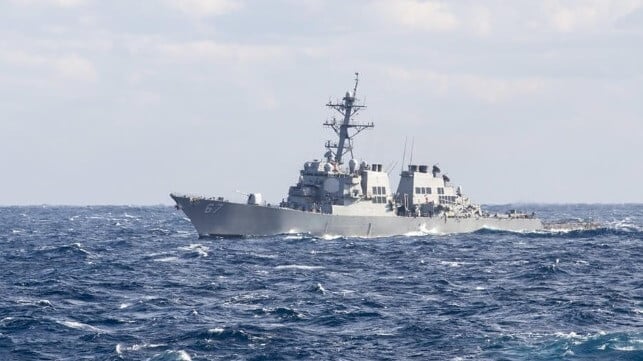U.S. Navy Plans to Extend Service of its Oldest Destroyers Into the 2030s

The U.S. Navy has announced plans to briefly extend the service lives of 12 of its oldest Arleigh Burke-class destroyers. The decision means that almost all of the Flight I Arleigh Burkes will stay in service for an extra one to five years, adding nearly 50 ship-years and nearly 1,100 vertical launch cells of missile capacity for naval planners into the mid-2030s.
“Today’s budget constrained environment requires the Navy to make prioritized investments to keep more ready players on the field,” Chief of Naval Operations Adm. Lisa Franchetti said. “The Navy is actively pulling the right levers to maintain and grow its battle force inventory to support the United States’ global interests in peace and to win decisively in conflict.”
In a statement, the service said that the decision was based on the material condition of each ship and the practicality of making repairs and upgrades. All of the covered vessels would be expected to age out of service in 2028-32.
The duration of planned life extension for each vessel varies from one year (USS Stethem and Carney) to three years (USS Barry and USS The Sullivans) to five (USS John Paul Jones, Curtis Wilbur, Stout, John S. McCain, Laboon, Paul Hamilton, Gonzalez and Cole). The service previously announced life extensions for USS Arleigh Burke, Mitscher, Milius, Ramage and Benfold.
Notably missing from the life extension list are USS Russell and USS Fitzgerald, the only ships between DDG 51-69 that have not been named. The two newest Flight I hulls, USS Hopper and USS Ross, are also absent.
The Flight I Arleigh Burkes date back to the 1990s, and they went through a midlife modernization refit beginning in 2010. During the newly-announced life extension, some might be candidates for additional bolt-on upgrades, like the canister-launched Naval Strike Missile.
The retention of the Flight I Arleigh Burkes will help to plug a much-discussed missile gap. Workforce, shipyard and design office delays have pushed the first Constellation-class frigate back by three years. Meanwhile, the long-serving Ticonderoga-class cruisers - which can carry up to 120 missiles each - are in deteriorating condition and will soon retire. The longest-serving Ticonderogas are nearly 40 years old, and the last few are scheduled to decommission by 2027.
“Extending these highly-capable, well-maintained destroyers will further bolster our numbers as new construction warships join the Fleet,” Secretary of the Navy Del Toro said in a statement today. “It also speaks to their enduring role in projecting power globally, and most recently in the Red Sea, their proven ability to defend themselves, as well as our allies, partners and friends from missile and drone attacks.”
